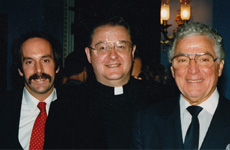The RIC was never a normal police force; commemorating it would be a travesty
Posted By: January 13, 2020
As a paramilitary force defending British rule, its officers were not innocent victims
Brian Hanley. Irish Times. Dublin. Monday, January 13, 2020
John William Nixon was a career policeman. A native of Cavan, he joined the Royal Irish Constabulary in 1899, at the age of 22. Nixon served in Donegal, Antrim, Mayo, Fermanagh, and Dublin and in August 1917 was appointed a district inspector. He was then the youngest such officer to have risen from the ranks of the force.
During those years Nixon must have carried out many of the normal duties of policing which have been referenced repeatedly by those arguing in support of a State commemoration for the RIC. But by 1921 Nixon had acquired a fearsome reputation in Belfast, believed by nationalists there to be the leader of a “murder gang” who carried out assassinations of republicans and others perceived as “disloyal”. Nixon was thought responsible for the notorious McMahon family murders during March 1922. Later that year he would be one of those 1,350 RIC men who transferred to the new Royal Ulster Constabulary on its foundation.
Nixon’s story illustrates why the idea of an uncontentious commemoration of the RIC was always an impossibility. Last October Minister for Justice Charlie Flanagan described those policemen who were killed between 1919-21 as having been “murdered”. He has also claimed that they were only “doing what police officers do. As they saw it, they were protecting communities from harm.”
But the story of the RIC under British rule was never that of a normal police force, even before the revolutionary era. And, as a paramilitary force between 1919 and 1921, the RIC were combatants, not innocent victims.
Much of the recent debate has been infuriatingly partitionist. As Nixon’s story illustrates, the RIC was an all-Ireland body. Belfast alone saw almost 500 deaths between 1920 and 1922, mostly of civilians, many of whom died at the hands of RIC officers (sometimes out of uniform).
Streets of Belfast
As writers such as Patrick Mulroe, John O’Neill and Kieran Glennon have pointed out this week, the War of Independence was fought on the streets of Belfast just as much as in Dublin, Limerick or Cork. But there has been almost no mention of another component of the RIC, the Ulster Special Constabulary (USC) formed in the autumn of 1920.
By June 1921 nearly 20,000 men had enrolled in different sections of the USC, popularly known as the “Specials”. Recruited extensively from among unionist ex-servicemen and members of the Ulster Volunteer Force, the Specials soon became a byword among nationalists for sectarianism. Home Rule MP Joseph Devlin told Westminster that “we would not touch your Special Constabulary with a 40-foot pole . . . The chief secretary is to arm pogromists to murder Catholics . . . Their pogrom is to be made less difficult. Instead of paving stones and sticks they are to be given rifles.”
The Specials are also part of the story of the RIC, based in RIC barracks and operating alongside the police. (Indeed, USC fatalities are included in Richard Abbott’s comprehensive Police Casualties in Ireland 1919-22.) While some have maintained that it was never intended to commemorate the Black and Tans and Auxiliaries, in reality, it is impossible to remember the RIC and not include these forces.
At least 150 of the police dead between 1919-21 were men born outside Ireland, but a number of the Irish fatalities were also “Auxies” or Tans. Constable Joseph Bourke, a native of Cork, was shot dead in Tipperary in June 1921. Bourke, a former soldier, had joined the RIC in June 1920, when it must have been clear that his duties would not involve serving summonses and searching for poitín makers. That he been recommended for police service by district inspector Oswald Swanzy, widely believed to have been involved in the murder of Tomás MacCurtain, suggests that Bourke was politically loyal to the British state.
British rule
Portraying men like him as naive victims of circumstances robs them of agency. The fact is that a significant number of Irish policemen chose to defend British rule, presumably for a variety of political and personal reasons. Others, of course, chose not to. In 1920, 3,229 officers left the RIC, with a further 3,208 resigning in 1921. Some of these men left the police through fear or because their families had faced boycott and intimidation.
But many of the departing officers were those who wanted no part in a war against the independence movement. However, there were ample replacements for them, with 7,869 new recruits in 1920 and 5,834 in 1921. Those men were making a choice. They knew that they would be fighting a war to keep Ireland within the Empire. The question is not whether the RIC of a century ago were “decent” men, but what it was they fought for.
The independent Irish State emerged from a struggle for self-determination, part of which involved an armed conflict against the crown forces, which included the police. A State-led commemorative agenda that depicts these events as a series of tragedies in which all sides deserve equal respect, or indeed in which a police force deserves respect simply because it was a police force, presents a travesty of history as it was.
Brian Hanley is a historian and author of The Impact of the Troubles on the Republic of Ireland, 1968-79: Boiling Volcano?










